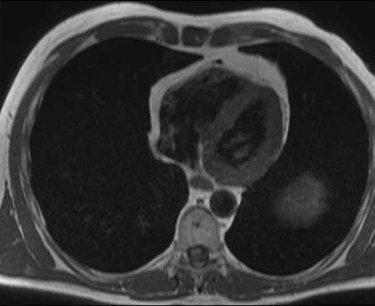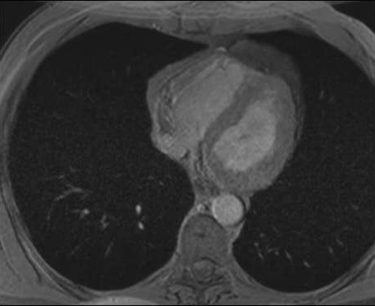Cardiac MRI > Technique > Pulse Sequences
Pulse Sequences
![]()
Pulses sequences are a pattern of radiofrequency pulses and magnetic gradients that are used to produce an image. There are a variety of different pulse sequences that are used in cardiac imaging that can be broadly divided into either black-blood techniques or bright-blood techniques. Spin echo (SE) cardiac sequences are typically black-blood techniques, while gradient echo sequences are typically bright-blood techniques.
Spin echo has relatively little artifact from metal, but longer acquisition times than gradient echo. High resolution images are often acquired and are used to study the anatomy of the heart and mediastinium as well as the thoracic aorta and great vessels. Each image requires a single breath hold.
Gradient echo (GE), a.k.a. gradient recalled echo (GRE), has fast imaging speeds, but is more susceptible to metal induced artifacts. Gradient echo is the workhorse of cardiac imaging because of its speed and versatility. Gradient echo imaging is employed in the assessment of ventricular function, blood velocity and flow measurements, assessment of valvular disease, myocardial perfusion, delayed enhanced imaging, and magnetic resonance angiography.


These figures show the differences between spin echo (left) and gradient echo (right) images, with spin echo having black blood and gradient echo having bright blood.
